Iran now is a country rich in tiled architecture, textiles, and culture. But all of this is due to the Safavid dynasty’s heritage, which laid the groundwork for the lovely nation long before it was given the name Iran. The Safavid influence is all around any older tourist who wants to stroll among the bustling mosques and marketplaces.
This article will provide a quick overview of the Safavid Empire’s history, from its founding in 1501 under Shah Ismail I through its fall with Shah Sultan Hussein in 1722.
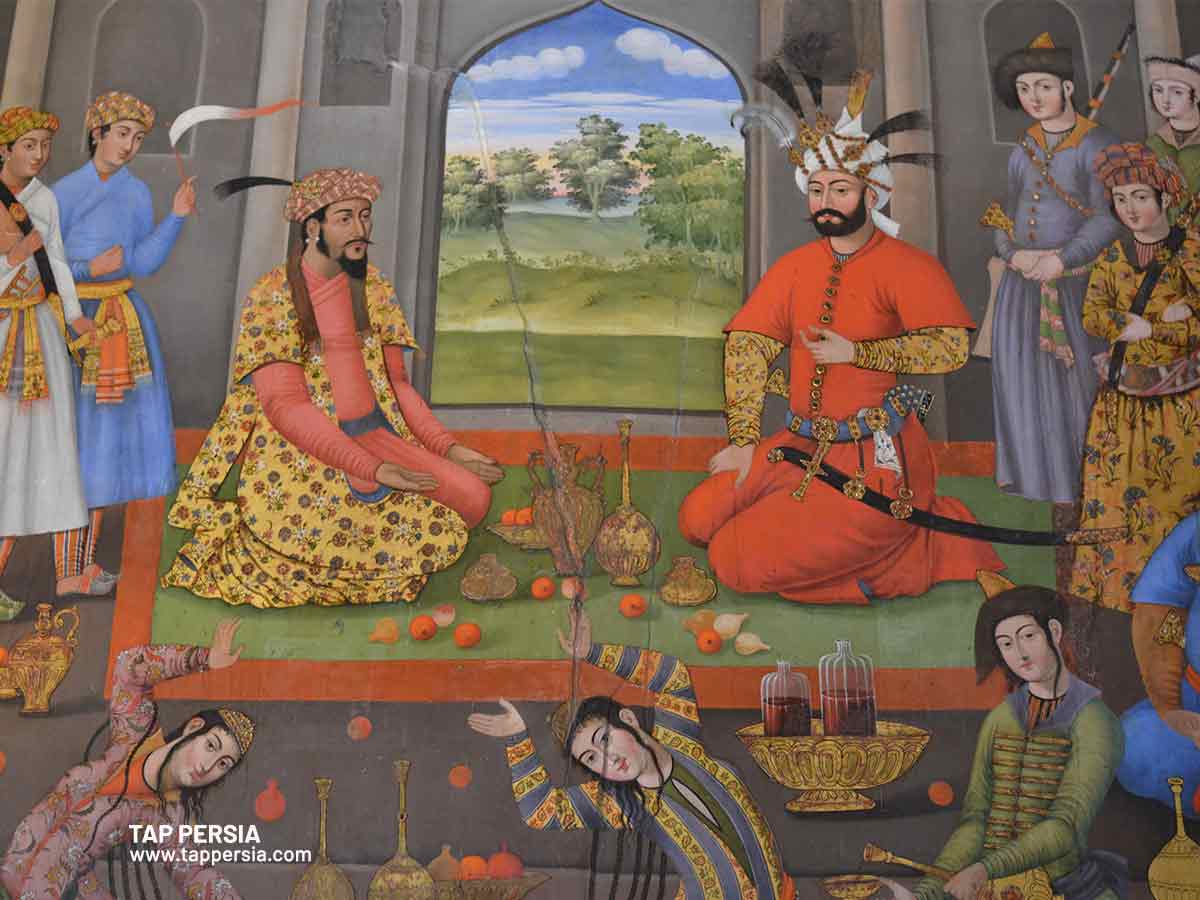
Who were the Safavids?
The Safavid dynasty (1501–1736) is frequently regarded as the start of modern Persian history. It strengthened the position of the Shi’ite Sufi groups and made Twelver Shiism the official religion of Iran.
The Safavid Sufi dynasty descended from Sheikh Safi al-Din of Ardabil, was credited with founding the oldest Shi’ite Sufi order of this period. They progressively achieved authority in the Azerbaijan region and the surrounding regions. The Safavid dynasty supplied a monarchy-like arrangement until they arrived in the Iranian kingdom at the start of the 16th century. The Abbasid Empire came to an end after the Mongol invasions that started in the 13th century when new Turkic peoples and dynasties spread over most of Islamdom.
The Persian mystics were able to develop a sizable following for themselves because the Safavi order at Ardabil was far enough from any political center to remain impartial.
The Rise of the Safavid Empire
The Safavid dynasty controlled Safavid Iran or Safavid Persia, often known as the Safavid Empire, from 1501 to 1736. It was one of the largest Iranian empires following the 7th-century Muslim invasion of Persia. It is frequently regarded as one of the gunpowder dynasties and the start of modern Iranian history. We shall go into great length about this key period of Iranian history, the establishment of the Safavid Empire, below.
Safavid Empire Timeline
We will now talk about the historical timeline of the kings during the reign of the Safavid era:
1.Ismail I
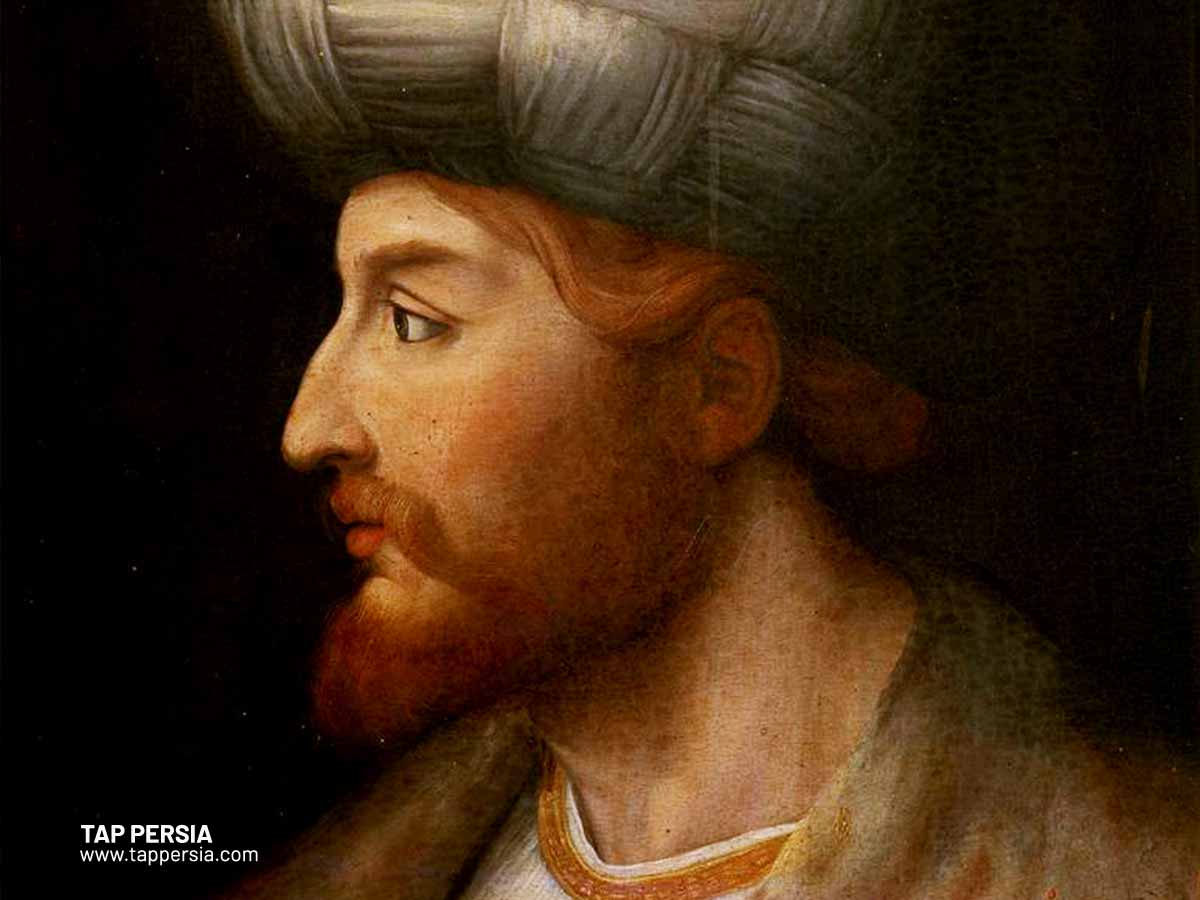
Ismail I, often known as Shah Ismail, founded the Iranian Safavid dynasty during his 1501–1524 reign as the nation’s King of Kings (Shahanshah). He established one of the gunpowder empires during his reign, which is regarded as the start of modern Iranian history. His legacy included Iran’s resurgence as an economic powerhouse between the East and the West, the construction of an effective government and bureaucracy, its architectural achievements, and support for the fine arts.
One of the most critical turning points in the history of Islam was reached when he declared the Twelver branch of Shia Islam to be the official religion of his newly established Persian Empire.
By destroying the tombs of the Abbasid caliphs, Sufi Muslim ascetic Abdul Qadir Gilani and Sunni Imam Abu Hanifa an-Nu’man in 1508, he incited sectarian warfare in the Middle East. The Safavid Empire was therefore politically isolated from its Sunni neighbors, the Uzbek Confederation to the east and the Ottoman Empire to the west, giving him political gain. Although few of his Persian compositions have survived, he was a prolific poet who made significant creative contributions to both Azerbaijani and Persian literature.
2.Tahmasp I
After losing to the Ottomans in the Battle of Chaldiran, Shah Ismail I’s reign began to wane. By limiting parts of the Qizilbash’s privileges, he refocused his attention on reforming the administration of the provinces and balancing the authority between the governors of Qizilbash and the nobles.
Due to the fact that each successor to the throne had received their education from a different Qizilbash governor, civil war resulted after his death in 1524 as a result of this. Before Tahmasb Mirza, Shah Ismail I’s eldest son, took the throne, there was a civil war that lasted ten years.
The nobles were once again appointed to the top military and administrative positions by the new Shah Tahmasb, further consolidating authority in the new capital of Qazvin.
After multiple battles to keep control of Tabriz, the Safavid capital relocated to Qazvin. To designate it as a significant place, it received considerable urban development. Shah Tahmasb built a royal suburb and affluent homes, but other arts suffered significantly since he “renounced worldly pleasures.” The royal precinct still bears the effects of his urban vision, which was carried on after his death in 1576.
3.Ismail II
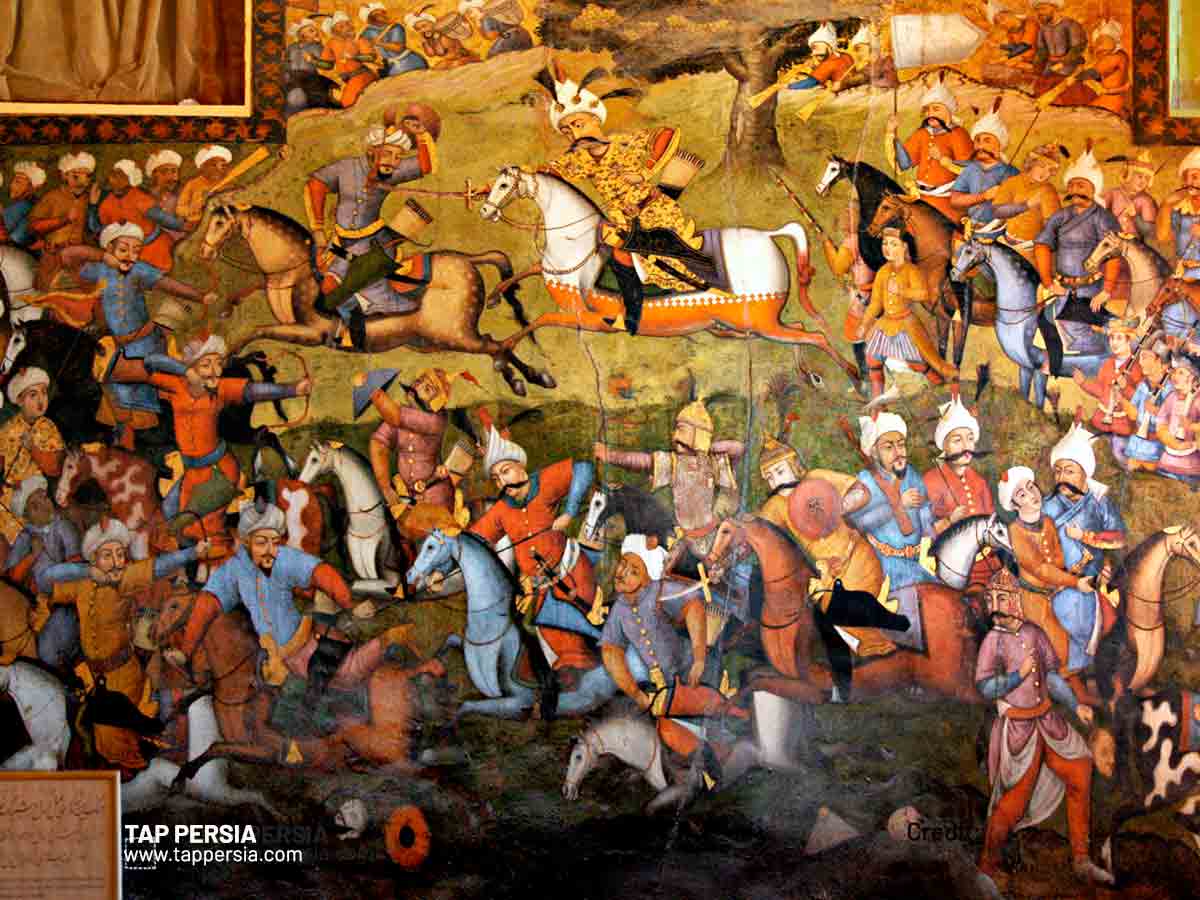
From 1576 until 1577, Ismail II served as Iran’s third shah. He was Tahmasp I’s second child and Sultanum Begum, his main concubine. He was held captive in Qahqaheh Castle for twenty years because of his ongoing disputes with the vassals of the Safavid Empire or his rising popularity among the Qizilbash tribes.
With the assistance of his sister, Pari Khan Khanum, Ismail was able to defeat his rivals and capture the throne after Tahmasp died without a planned heir. Ismail expelled all the male royal family members, with the exception of his full-brother Mohammad Khodabanda and his three sons, in order to rid himself of future contenders.
Ismail mocked the Shi’ia ulama and sought spiritual direction from the Sunni ulama. He could have done this to spite his devout Shi’ia father.
Safavid dynasty leader Ismail imprisoned and ignored Pari Khan. He passed quite suddenly in November 1577 for unexplained causes, although the overwhelming consensus is that either Pari Khan Khanum or the Qizilbash chiefs poisoned him. Mohammad Khodabanda, his brother, took over as his successor. He is viewed as an incompetent, perverse, and illogical ruler by modern historians, yet he is also portrayed as a just monarch by certain modern chroniclers. Even by the norms of the time, his policies were terrible, and his character was extraordinarily harsh.
4.Sultan Mohammad
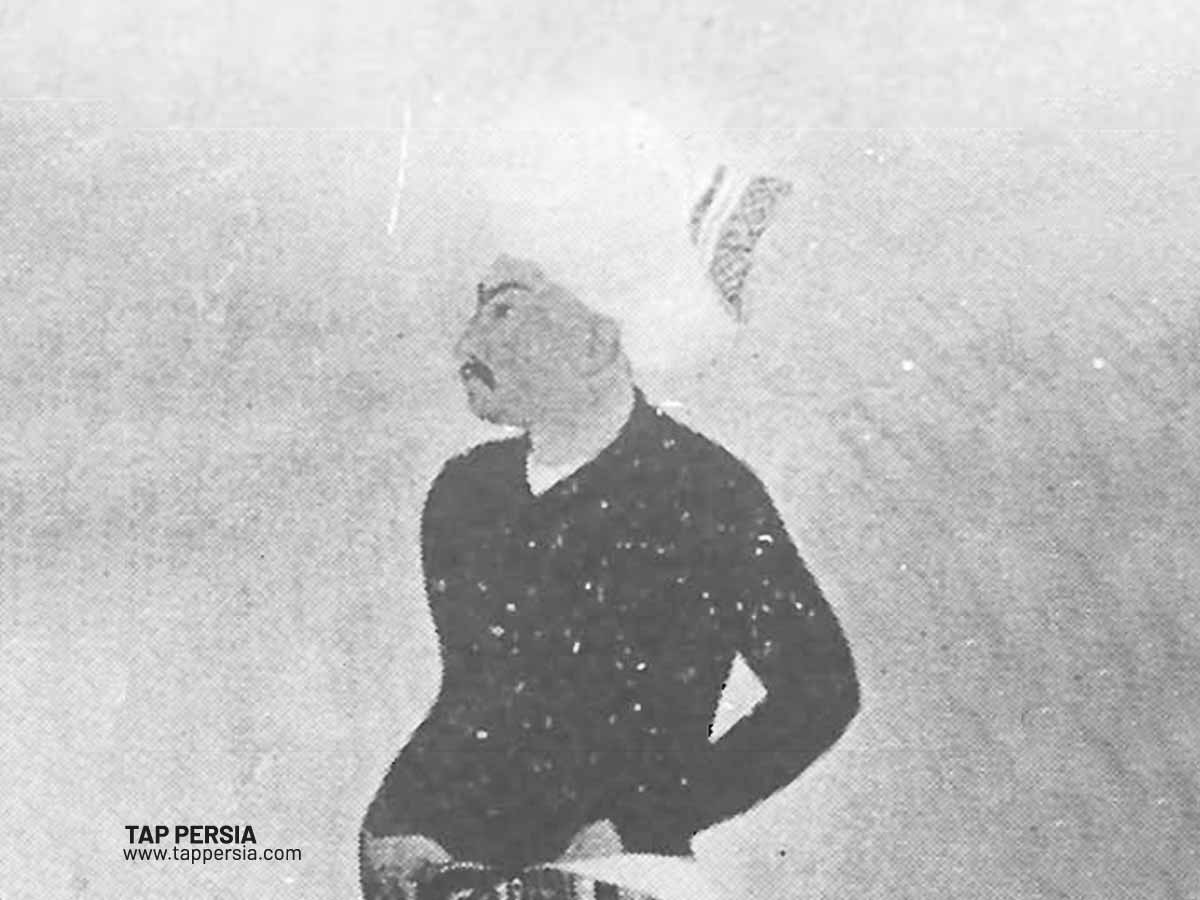
The fourth Safavid king of Iran, Mohammad Khodabanda, commonly known as Sultan Mohammad, ruled from 1578 until his overthrow by his son Abbas I in 1587. He was the son of Shah Tahmasp I and the grandson of Ismail I, the founder of the Safavid dynasty. Following the death of his father in 1576, Khodabanda was outmatched by his younger brother Ismail II. Ismail II ruled for just a short time and in a ruthless manner, but Khodabanda, who had the backing of the Qizilbash tribes, emerged as the only heir, and he was crowned Shah in 1578.
Tribal strife as part of the second Safavid era civil war and the crown’s ongoing weakness were characteristics of Khodabanda’s rule. Although his wife Khayr Al-Nisa Begum worked to establish his rule, the formidable Qizilbash tribes resisted her attempts.
Major tribes allied themselves with Khodabanda’s sons and potential heirs throughout his rule, which was marked by factionalism. Due to this internal turbulence, outside forces like the Ottoman Empire were able to expand their territory, taking control of the former capital of Tabriz in 1585. In a coup on behalf of his son Shah Abbas I, Khodabanda was eventually deposed.
5.Abbas I
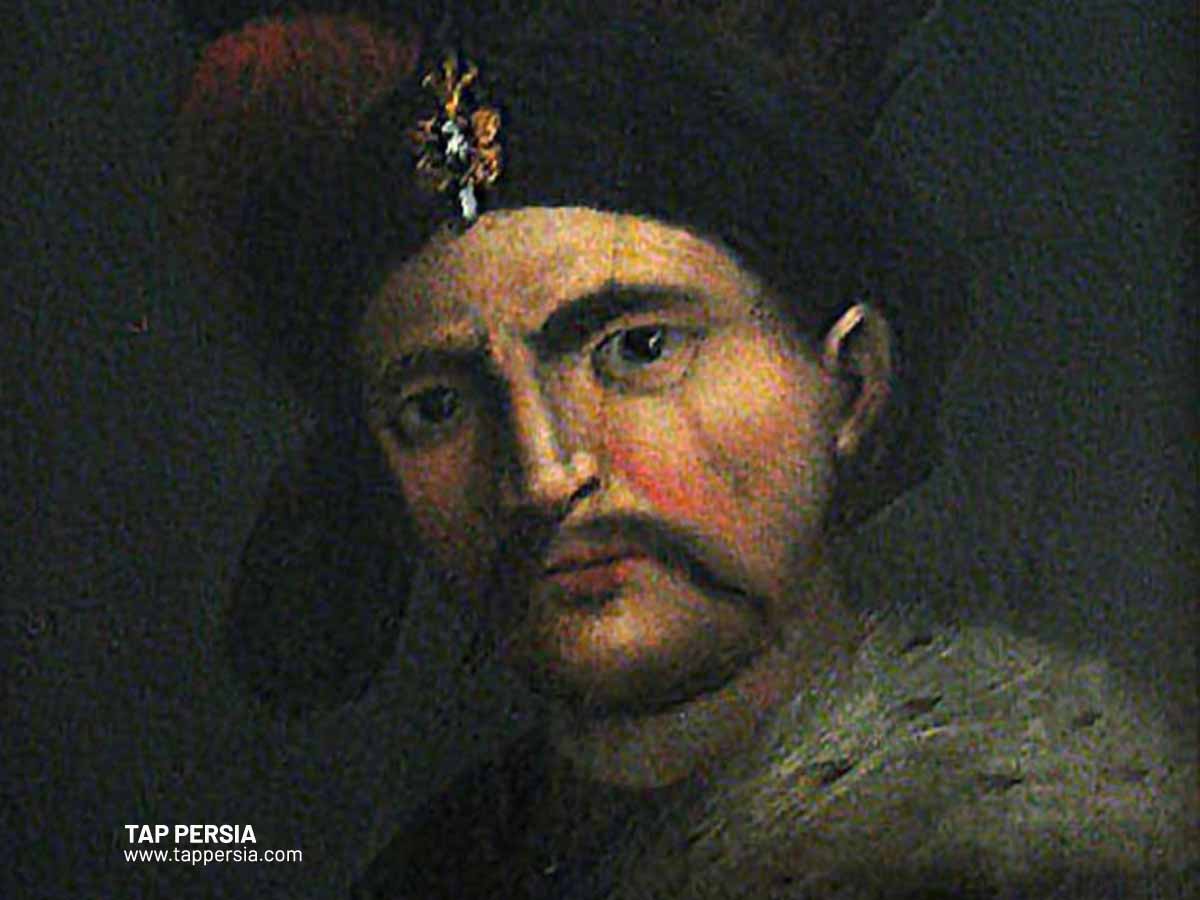
Following his 1588 coronation, Shah Abbas I (the Great) of the Safavid Empire made peace with the Ottomans in 1590. The “Qizilbash” was then significantly weakened, and the use of guns was increased. Three different military formations were created, each of which received early modern training and equipment as well as funding from the royal coffers. In 1603, after defeating the Turks, he took control of Baghdad and forced them to cede all the land they had taken.
Additionally, he drove out the Portuguese merchants who had taken control of the Persian Gulf’s Hormuz Island at the beginning of the 16th century. Iran became a strong power during the rule of Abbas because of his military victories and effective governance. He transferred the seat of government from Qazvin to Isfahan, where he built the Shah Mosque of Isfahan, the Sheikh Lofollah Mosque, and other notable structures. In the Isfahan Julfa neighborhood, Christians were permitted and numerous missions and churches were constructed.
The Safavid capital was moved from Qazvin to Isfahan in 1598 by Abbas the Great. Being in the middle of Persia, Isfahan was less at risk from invasion than Tabriz or Qazvin. Isfahan, which was also the capital of the Seljuks centuries previously, was embellished by Abbas and rose to become one of the finest cities in history.
6.Safi I
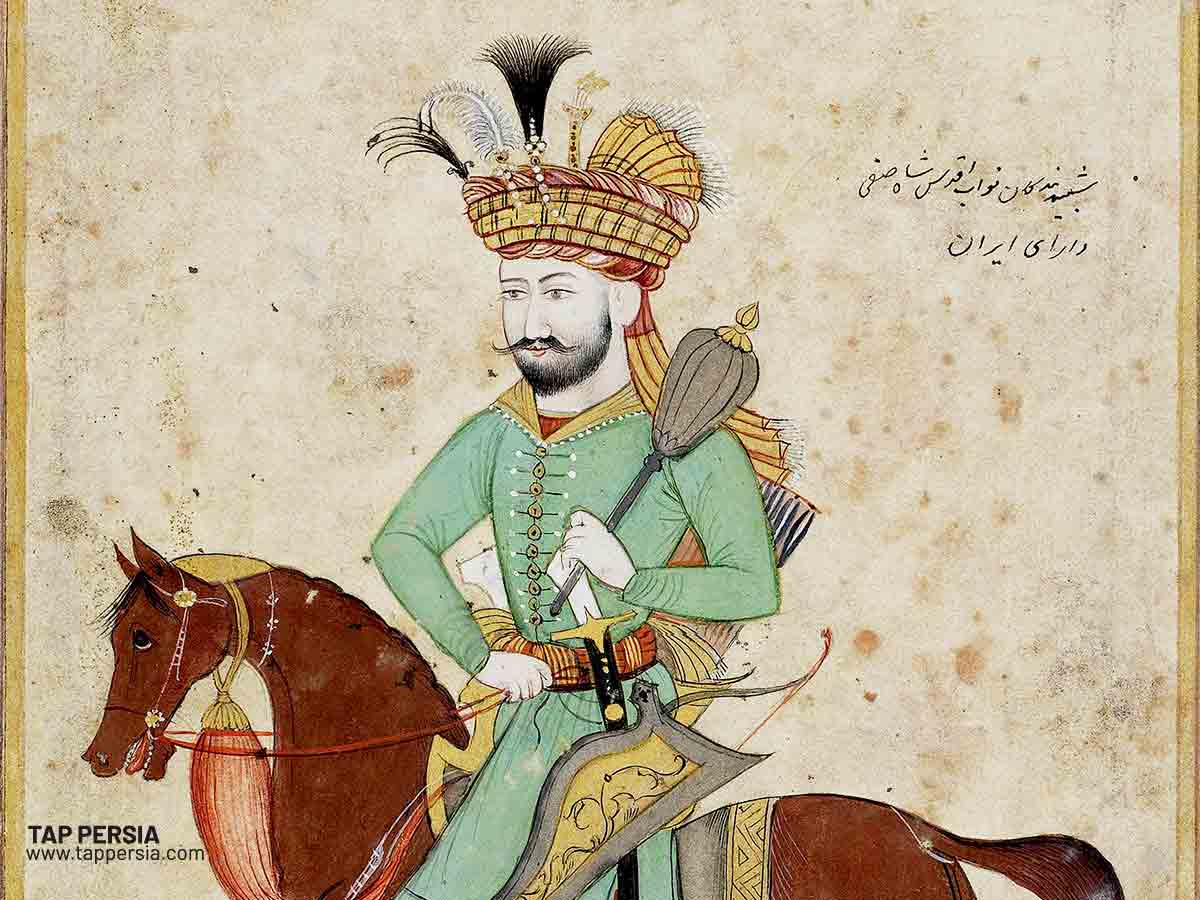
The sixth Safavid ruler of Iran, Shah Safi I (1611–May 12, 1642) ruled for 14 years—from 1007 to 1021 AD. He was a brutal ruler in general and killed many individuals in his vicinity out of concern for maintaining power. He overthrew or executed several of Shah Abbas’s greatest generals, including Imam Qoli Khan, Zainal Khan Shamlu, Dawood Khan Gurji, and Ali Mardan Khan. Due to Shah Safi’s cruelty, Sultan al-Ulama Amoli, the minister who stayed in office until the end of Shah Abbas’ rule, lost his chancellery in 1632 and his children went blind.
Mirza Taleb Urdubadi was appointed chancellor, but because of his drug addiction and harem background, he was unable to or didn’t want to get involved in the government’s business.
At least eleven times under Shah Safi’s rule, the Uzbeks attacked Mashhad and Iran. Sultan Murad, the Ottoman king, marched to Baghdad and Azerbaijan but was unsuccessful there. With the signing of the Treaty of Zahab, Iran and Iraq were cut off forever. Georgia, Kandahar, Qazvin, and Gilan all had revolts. Iranians did not have poor living circumstances despite these uprisings and the fall of Iraq.
7.Abbas II
From 1642 to 1666, Iran was ruled by Shah Abbas II. He was the sixth Safavid Dynasty Shah. He was the child of Anna Khanum, a Circassian, and Shah Safi I. Prior to taking the title of Shah on May 15, 1642, he went by Sultan Muhammed Mirza. Saru Taqi, the grand vizier, was given the responsibility of leading Persia because the new shah was under ten years old. Corrupt behavior was combated by Saru Taqi. He amassed many foes. A gang of army officers assassinated him on October 11, 1645. Then, until his demise in 1653 or 1654, Khalifa Sultan was appointed grand vizier.
Most of Abbas’ rule was calm in the Safavid era. It was crucial that there be no Ottoman attacks. Abbas took control of Kandahar in 1648. He protected it from Mughal India’s assaults. On the evening of October 25–26, 1666, he passed away in Khusruabad, close to Damghan.
8.Suleiman I
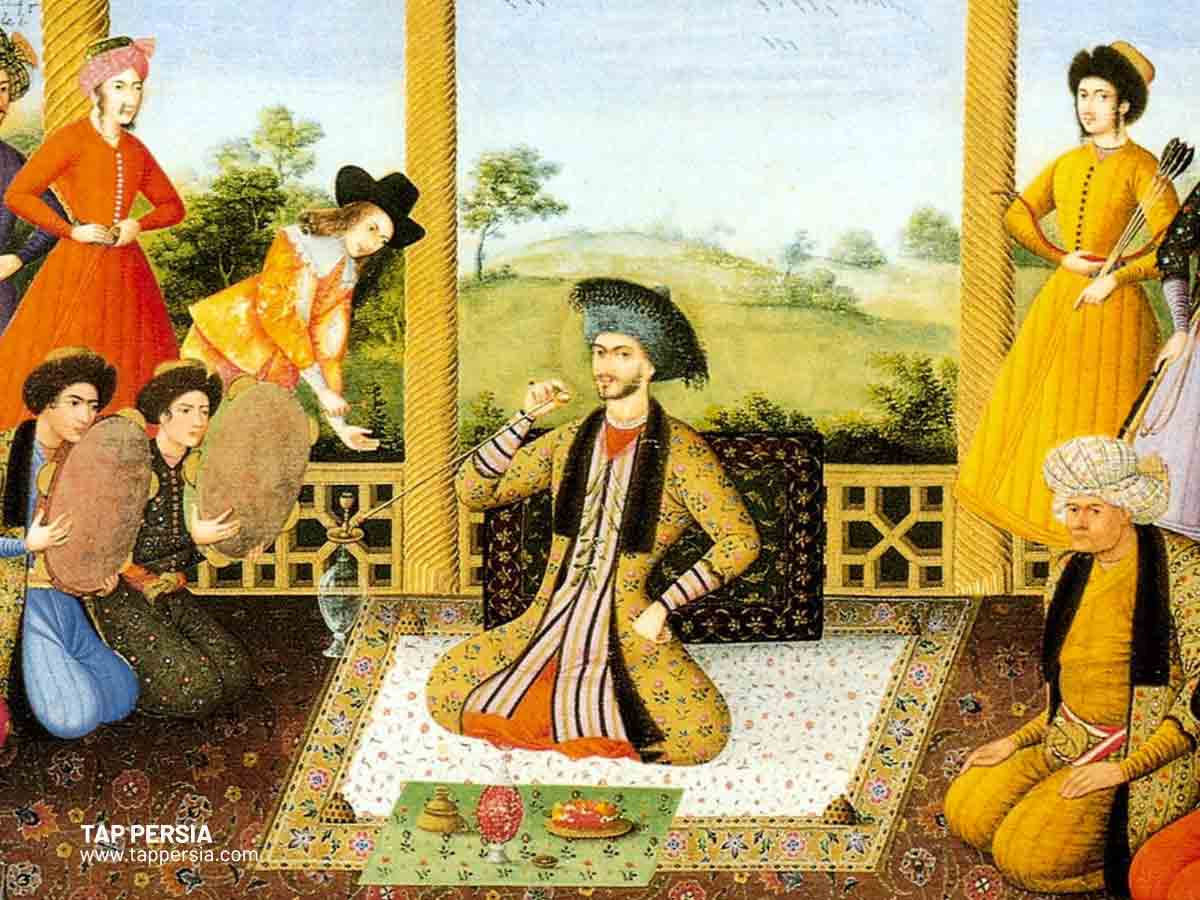
From 1666 until 1694, Suleiman I served as Iran’s eighth and last Safavid king. He was Abbas II’s eldest child with his concubine Nakihat Khanum. Suleiman, who was born Sam Mirza, was kept a secret from the public and spent his early years in a harem with other children and women. Sam Mirza assumed the throne in 1666 as Safi II, after his grandfather Safi I. His court astrologers persuaded him to have another coronation after a troubled reign, and in 1668 he was anointed king under the new name Suleiman I.
Suleiman withdrew into his harem during his second coronation to indulge in sex acts and binge drinking. He was unconcerned about the status of the nation and would sometimes go months without making an appearance in public. There were no notable conflicts or uprisings during Suleiman’s rule.
Suleiman’s reign was viewed as a failure due to the Safavid army’s fall and invasions by the Uzbeks and Kalmyks. He passed away on July 29, 1694, due to his long-term drinking and gout.
He was the first Safavid Shah to never command an army or police his realm, instead handing over control of the government to the powerful court eunuchs, harem queens, and Shi’i high clergy. The Farangi-Sazi painting style reached its pinnacle during his rule, which was the sole admirable part of his rule.
9.Sultan Hossein
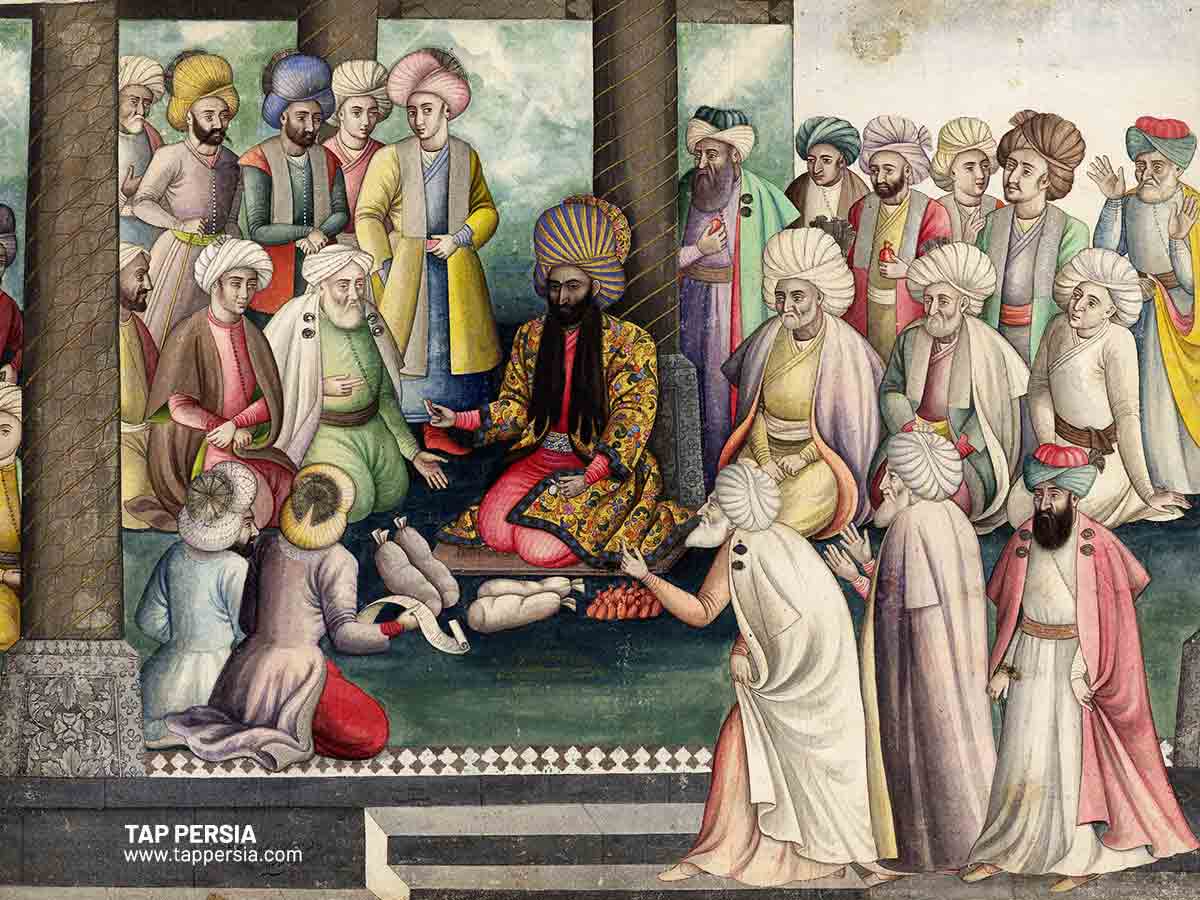
His tenure marked the beginning of the Safavid dynasty’s final demise due to the corrupt administration, declining agricultural productivity, and diminished military force. He was the first Safavid Shah to never command an army or patrol his realm, handing over control of the government to the powerful court eunuchs, harem queens, and Shi’i high clergy. The Farangi-Sazi, or Western painting style, reached its pinnacle during Suleiman’s support, which was the sole admirable part of his reign in terms of art appreciation.
Tribal uprisings, urban unrest and neighboring countries’ expansion were all prevalent during Soltan Hoseyn’s final ten years in power in the Safavid era. Whereas the Afghans had revolted under Mirwais Hotak’s leadership, the greatest threat came from the east. Mahmud Hotak entered the heart of the nation and ultimately made it to Isfahan, the seat of government, in 1722. Soltan Hoseyn was forced to give up on October 21, 1722, as a result of the city’s subsequent famine.
The putative heir, Tahmasp II, was proclaimed in the city of Qazvin by Soltan Hoseyn’s third son in November. Upon the instructions of Mahmud Hotak’s successor Ashraf Hotak, Soltan Hoseyn was executed on September 9, 1727, as a result of a derogatory letter that the Ottoman commander-in-chief Ahmad Pasha had sent.
10.The Invasion of Iran by Afghans
The Afghan conquest of the Safavid Empire was caused by political tensions within the Khorasan province in northern Iran. Gurgin, a new governor that Shah Soltan Hosein appointed to Qandahar attracted controversy and animosity.
Mir Vais Ghilzai requested the removal of Gurgin from power and received a fatwa from a well-known Sunni ulema stating that it was morally acceptable for him and his Sunni adherents to fight the Safavids. Mir Vais Ghilzai took over as ruler of Qandahar when Gurgin was killed in 1709, and he remained in that role until his passing in 1715.
After a brief interval, Mir Vais’s son Mahmud Ghilza assumed the role of governor and continued where his father had left off.
Mahmud Ghilzai invaded the central Safavid provinces using the Safavid Qizilbash warriors’ loss and the Abdali Afghans’ conquest of Herat as justification. He invaded Isfahan in 1722 and took Kerman in 1719, causing severe suffering for the local populace. Before Ghilzai and his army took control of the city and the core Safavid territory, Soltan Hosein set up Tahmasp Mirza’s escape.
Tahmasp Mirza’s escape was notable because the Safavid line of lineage was important as an indicator of credibility for future kings. Shah Soltan Hosein was murdered by Mahmud Ghilzai in 1726, and Tahmasp Mirza afterward made a comeback in Mazandaran. Malik Mahmud of Sistan conquered Mashhad, essentially gaining control of Khorasan, paving the way for Nader Quli Khan’s ascension and eventual unification of the erstwhile Safavid Empire. Nader Quli Khan drove out foreign forces.
11.Tahmasp II
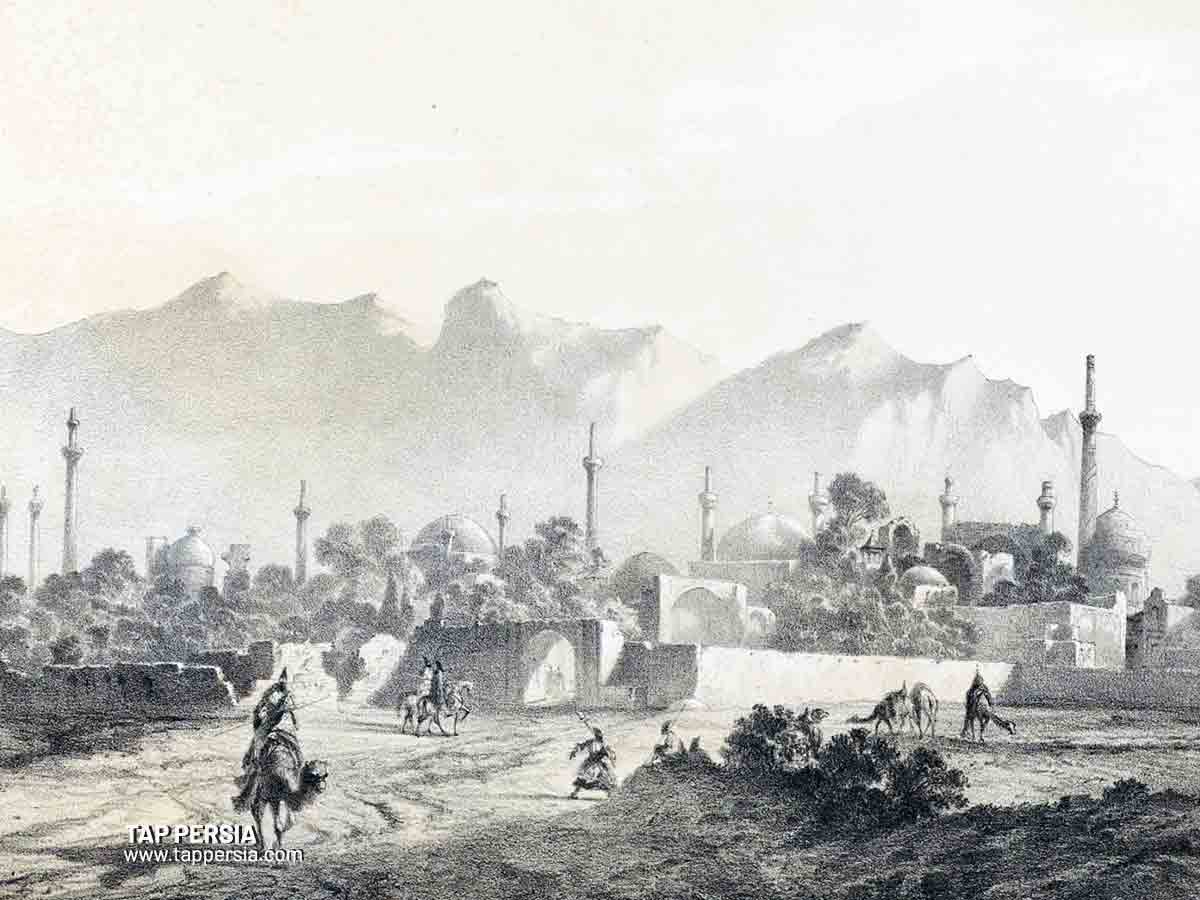
The tenth Shah of the Safavid era Iran reigned from 1722 to 1732 and was named Shah Tahmasp II (1740–1704). He was Shah Sultan Hossein’s third child, as well as the third crown prince to have a Georgian mother.
After his brother Safi Mirza was exiled, Tahmasp was appointed crown prince. He fled to Qazvin before Isfahan fell. He rose to the king once his father’s administration in Qazvin was overthrown. He was able to overcome Ashraf Afghan later with the aid of Tahmasp Qoli Khan, and in 1729 he once again took Isfahan. In his father’s home city, Bar received his crown. The Safavid dynasty’s 230 years of political dominance in Iran came to an end with his expulsion from the throne in 1732.
12.Tahmasp II (Deposed)
In 1731 A.D., Nader took control of the Herat citadel and warned Sultan Osman to either give up all of Iran’s territories or be ready for battle in a letter. Shah Tahmasp II was seen and paid ceremonial visits by Nader, who then hosted a dinner in his honor in the garden of 1000 acres. Following three days of partying and excessive drinking with courtiers and royals, all of the army’s elders and commanders learned that Shah Tahmasp had become mentally incapacitated as a result of his intoxication.
Shah Tahmasp was unable to remain as monarch, therefore Nader called a meeting of the Qazalbash chiefs and commanders. Shah Tahmasp II was overthrown in 1145 and sent to Mashhad; his young son Abbas Mirza eventually took the throne in 1732. In the year 1736 AD, Nader attained the throne.
13.Abbas III
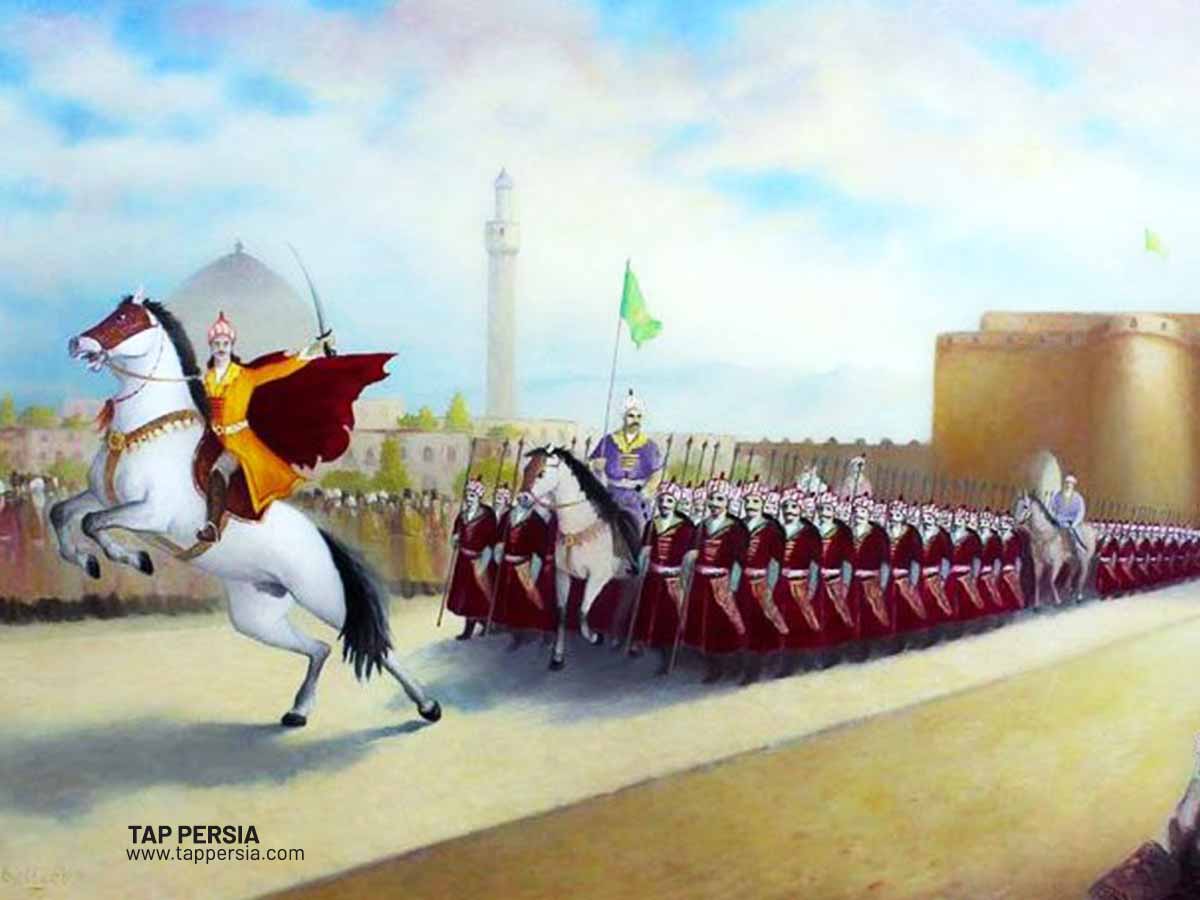
From 1732 to 1736, Abbas III of the Safavid dynasty ruled who was the son of Shah Tahmasp II and Shahpari Begum. On September 7, 1732, Nader Khan, who had taken the roles of deputy of state and viceroy, authorized him to serve as Iran’s nominal ruler.
Nader Khan got himself anointed as Nader Shah in March 1736, bringing the Safavid dynasty to an end. Nader Shah left his son Reza Qoli Mirza in charge of the kingdom in 1738 while he embarked on an expedition across Afghanistan and India. Reza started preparing to become king after learning that his father had passed away.
However, Mohammed Hosein Khan Qajar forewarned Reza that after learning of Nader’s passing, the citizens of Sabzevar would revolt, release Tahmasp II, and restore him to the throne. To prevent this, Reza instructed Mohammed Hossein to put Tahmasp and his sons to death. Tahmasp was strangled, little Abbas was hacked to death with a sword and Mohammad Hossein also had his brother Esmail assassinated.
14.Nader
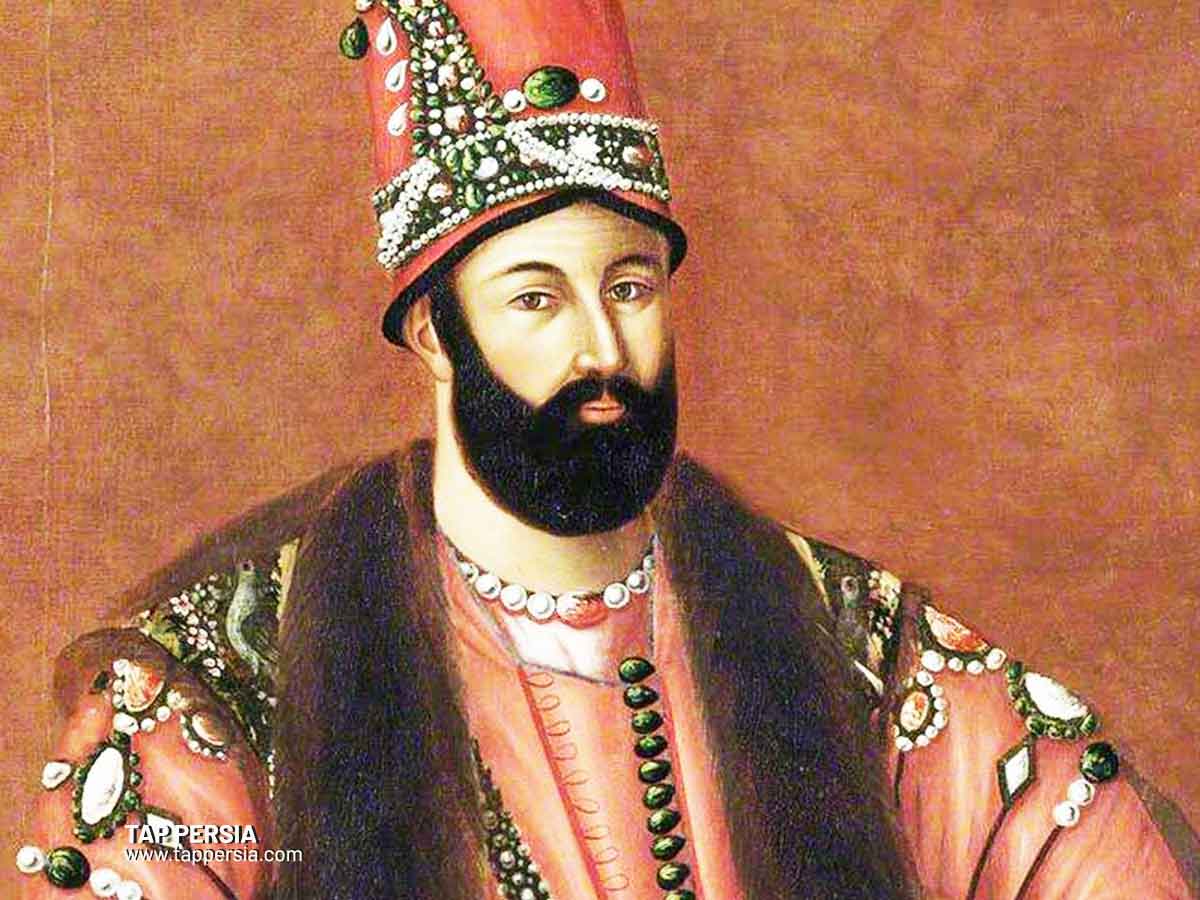
One of Iran’s most powerful kings in history, Nader Shah Afshar, also known as Nder Qoli Beyg, established the Afsharid dynasty. He was known as the Napoleon of Persia, the Sword of Persia, or the Second Alexander and fought multiple campaigns in the Middle East, Caucasus, Central Asia, and South Asia. He came to power during a time of unrest in Iran when the Ottomans and Russians had annexed Iranian land and the Hotaki Pashtuns had deposed the feeble Shah Soltan Hoseyn.
Nader brought the Safavid Empire back together and drove out the invaders. He grew so strong that, in 1736, he overthrew the remaining Safavid Empire members and assumed the throne himself. His military spending had a disastrous impact on the Iranian economy, but his campaigns briefly created a great empire that included or was part of Iran, Armenia, Azerbaijan, Georgia, Turkey, the North Caucasus, Turkmenistan, Afghanistan, Bahrain, Iraq, Uzbekistan, Oman, Pakistan and the Persian Gulf.
Nader Shah copied the brutality and military might of the Central Asian conquerors Genghis Khan and Timur, whom he idolized. He temporarily had the title of the most powerful ruler in West Asia thanks to his campaign triumphs, but after being killed in 1747, his kingdom and dynasty fell apart rather rapidly. The phrase “the last great Asiatic military conqueror” has been used to refer to him.
Cultural and Artistic Renaissance
It used to be customary in Iran for members of the royal family and those from higher social groups in the Safavidf era to apply for and support works of art. The Safavid rulers were likewise passionate patrons of the arts, and some of them—including Shah Tahmasp I and Prince Sam Mirza—were also accomplished creators who held the fine arts in high regard.
The Timurids’ art was frequently passed down to the Safavids, particularly in terms of painting. Here is everything you need to know about the culture and arts of the Safavid era:
Safavid Architecture: Magnificence in Design and Construction
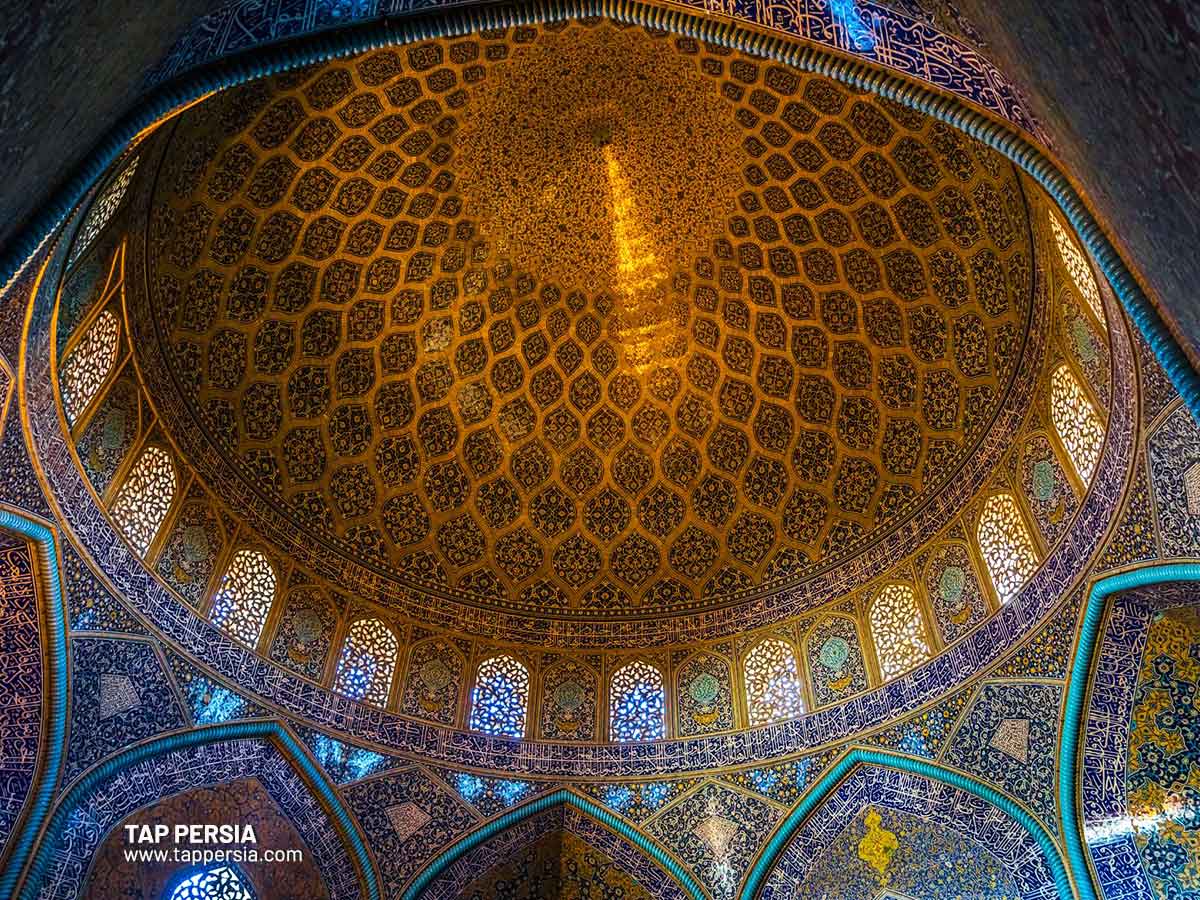
Networks of caravansaries were constructed during the Safavid dynasty in Iran in order to facilitate travel and promote trade. The Timurids were the first to emphasize the splendor of a structure.
Radial symmetry was implemented in a formal and stunning way. Sunken elements like niches or entrances were a common design choice among the architects. Safavid architecture was heavily influenced by color, with tiles covering bigger surfaces and classical shapes easily incorporated into grand sizes. Constructed were also utilitarian structures such as caravansaries, bazaars, bridges, pigeon towers, bathhouses and water reservoirs.
The Flourishing of Persian Arts: Literature, Calligraphy, and Miniature Paintings
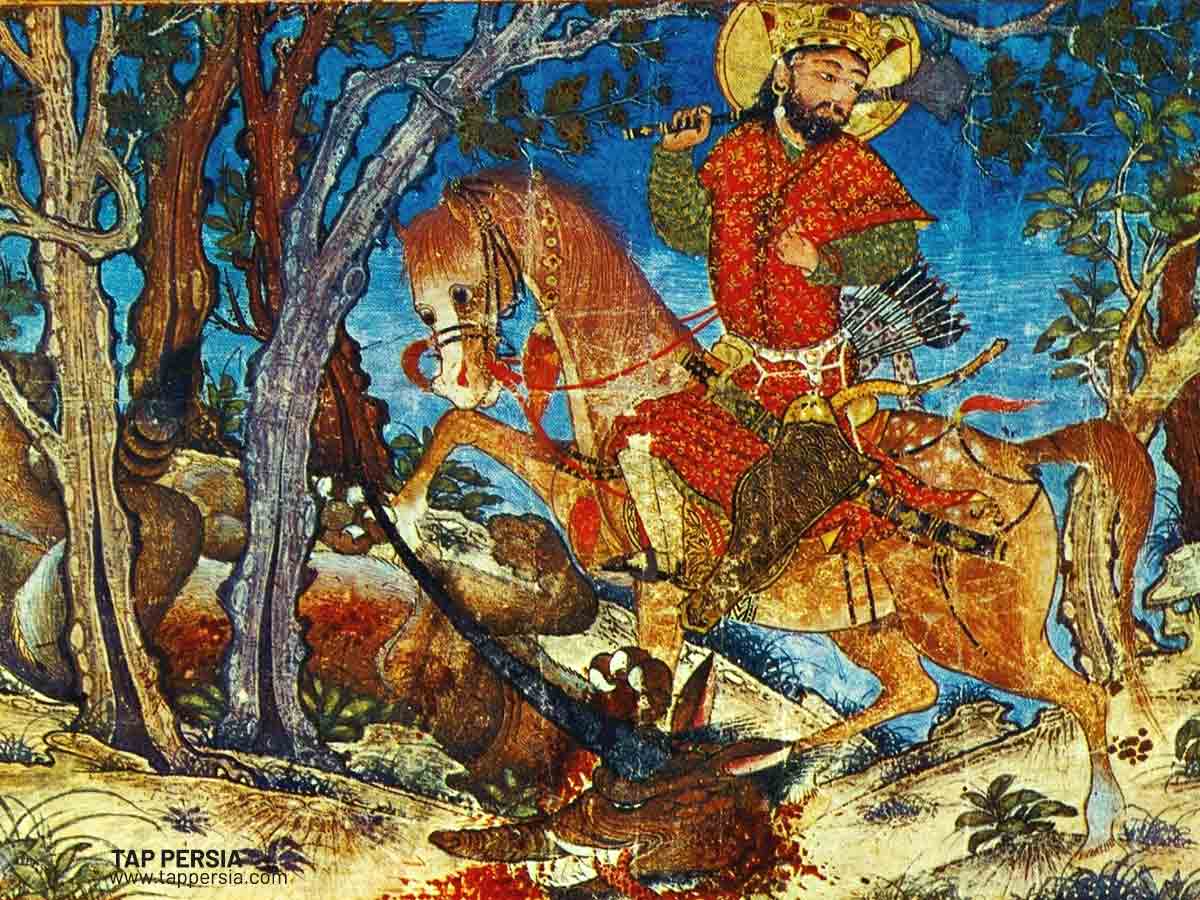
A lot of talented Iranians immigrated to service customers in Mughal and Deccani India due to the popularity of Safavid architecture, textiles, calligraphy, and art. Iran saw a golden age of art and calligraphy throughout the Safavid era, with several notable calligraphers emerging and numerous beautiful creations being made.
The scribe Ahmad Neyrizi regularised and changed the naskh script into a beautiful calligraphic style that is now referred to as the Iranian style of this script and is often used for transcribing sacred books, such as the Quran. During the Safavid dynasty, there was a particularly important growth in calligraphy, manuscript painting, textiles, and pottery.
Abdul Samad was a talented painter in the Safavid era who used his power to support the Mughal painting school. He was a talented calligrapher who was knowledgeable in both Khafi and Jali scripts. During the Safavid era, painting underwent a transformation with a focus on portraying everyday life. Iranian miniature painting flourished from the second half of the Ilkhan dynasty to the middle of the Safavid era. This art’s worth and quality did not decline in the face of political changes; rather, they increased.
Music and Poetry: The Golden Age of Persian Aesthetics
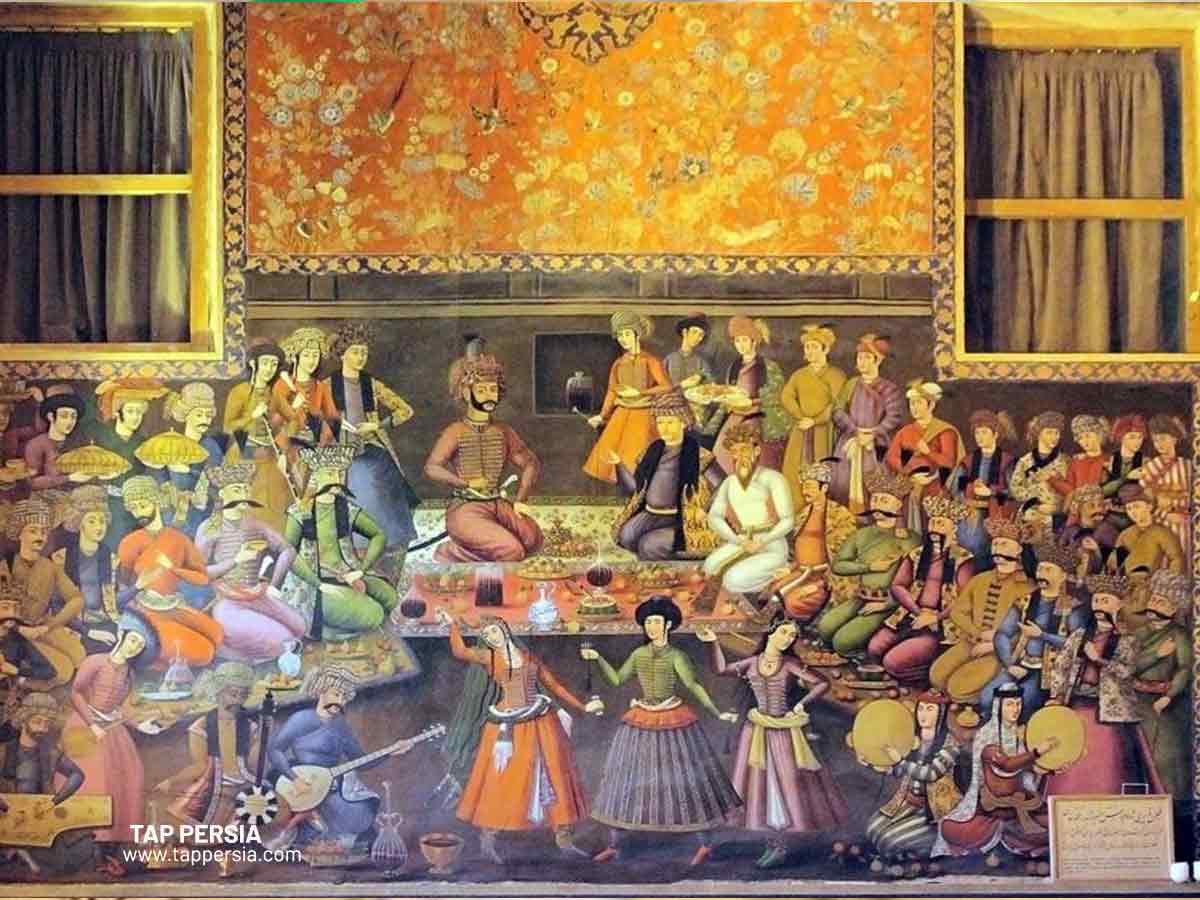
The Safavid dynasty ruled Iran for about two centuries, which contributed to the development of Iranian traditional arts and architecture. The state of music, however, was different throughout the monarchs’ rule. Shah Ismail’s reign saw a rise in the popularity of music, and his private palace had several paintings featuring courtiers.
However, during the rule of Shah Tahmasab, devotional music rose in acceptance and was used to promote both social cohesion and the affluence of the court. Following a brief period of time, Shah Tahmasab adopted stronger views against music to the point where he entirely isolated it, which prompted the ruling class of the time to write a treatise on outlawing music and its rules.
Safavid Empire’s Religion & Politics
In essence, the early Safavid empire was a theocracy. The Shah embodied the complete entwining of religious and political power. The people of the Empire quickly and enthusiastically accepted the new religion, observing Shi’ite holidays with great piety, and becoming one of the most robust and long-lasting Shi’ite centers in the Islamic world.
The Shah, who resembled the pope, was at the very top of the Safavid Empire’s pyramid-shaped governmental organization. The landed class and bureaucracy were regarded as the middle classes. The Common people, the lowest tier in the social hierarchy, were mostly farmers and herders.
Trade and Commerce During Safavid Empire in Iran
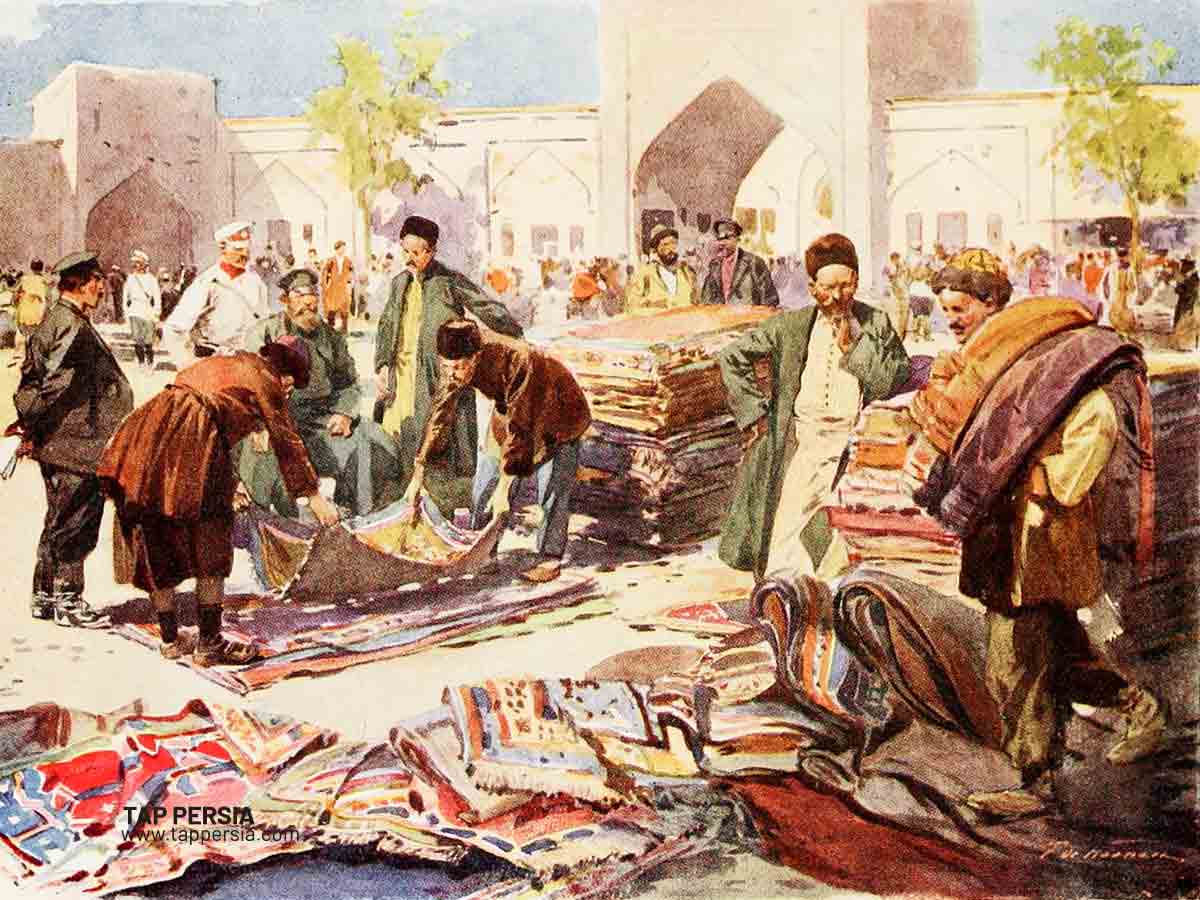
During the Safavid era, trade took the form of trading products for other things and for money (Safavid coins or silver from elsewhere). Major merchants sent their own agents to various locations, and other merchants conducted business in foreign nations. Iranian Muslim traders controlled the country’s internal trade, and silk was one of the principal exports. Leather, Chinese model dishes, sheep wool, camel, gold and silver artifacts, carpets and valuable stones were among the other export goods. Merchants sent linens, cups, mirrors, and window glass in exchange for elaborate metal objects, baggage, and writing paper.
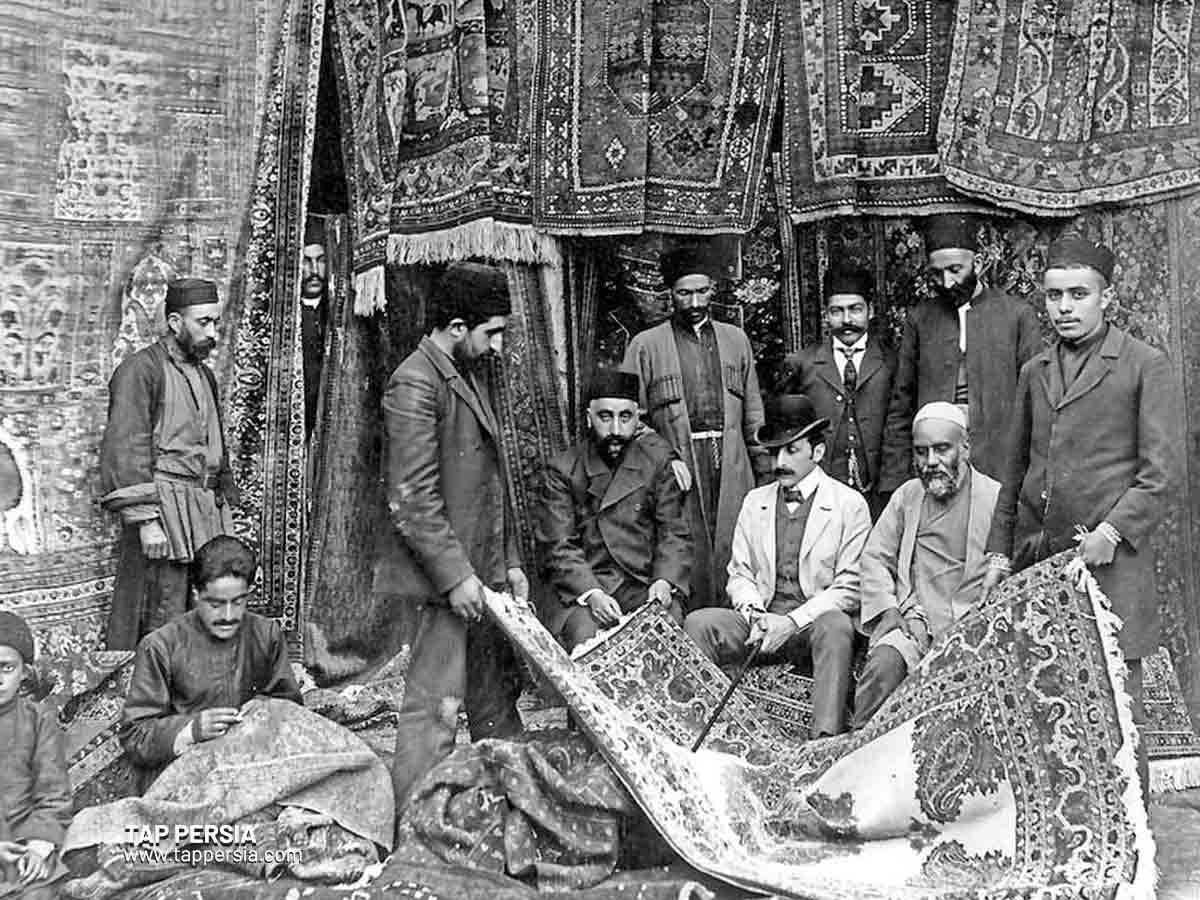
Raw silk, textiles made of silk, saddles, arcs, swords, polyenes, pearls, arrows, and a variety of paintings and dried fruits were among the exports to Russia. Along with Isfahan and Qazvin, Russian traders were active in northern cities. They transported many goods to Iran from Russia, including fur, raw leather, mahogany, linen, printed cotton, copper, iron, glassware, metal, paper, fur garments, honey, wax sugar, fish, caviar, and weapons. Iran sent to Turkey a variety of goods, including tobacco, caning-style kitchenware, rough and silk fabrics, steel, iron, diamonds, carpets, straw, and wooden goods.
Iran was the source of India’s imports of pickles, horses, crochet, ceramics, jam, flower and fruit extract and tobacco. Most Iranian cities had Indian traders, many of whom were usurers and money changers.
Military Power and Expansion During Safavid Era
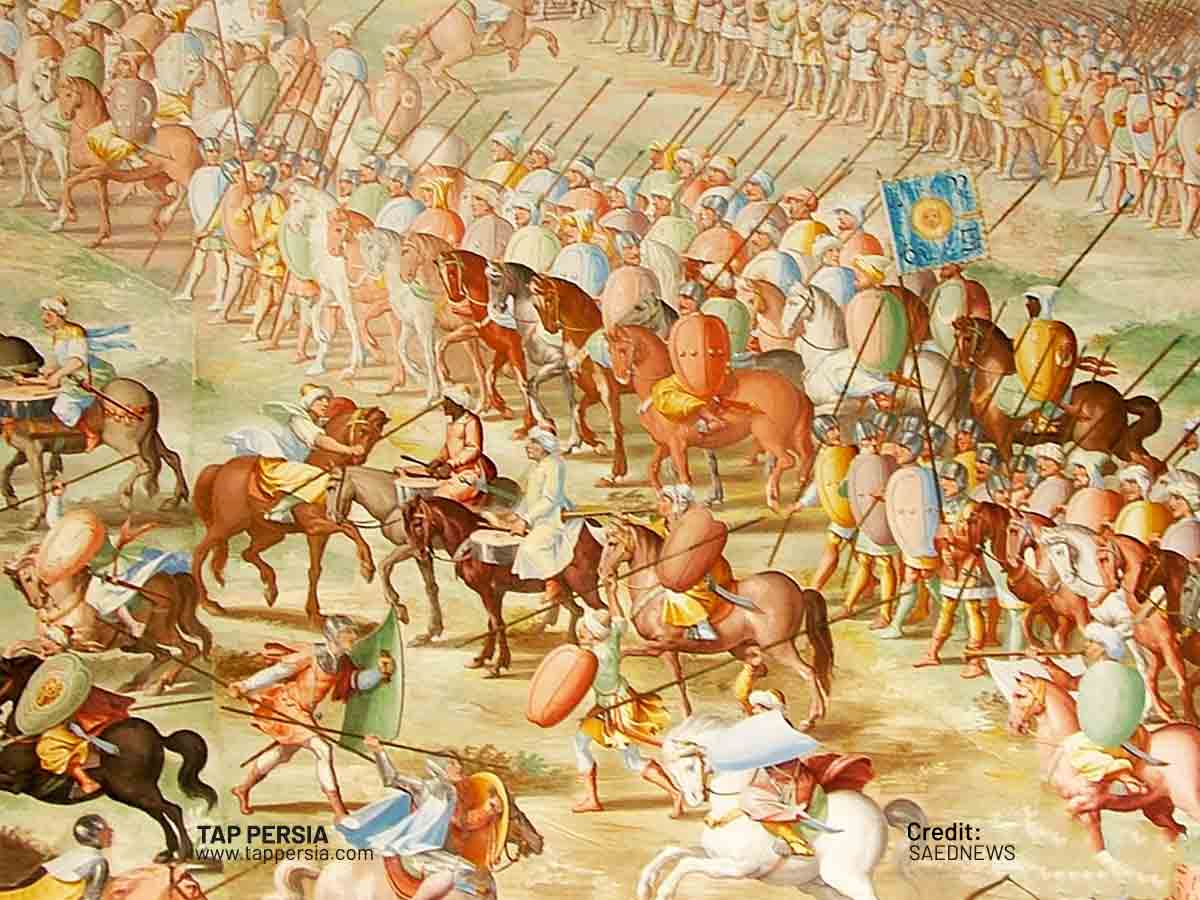
The Safavid military system developed from an army of tribal horsemen to a combined force with infantry components and artillery. The military structure remained unchanged from the passing of Abbas I to the fall of the empire in 1722, albeit it began to wane. The second stage coincided with and depended on the shift from a decentralized to a more centralized administration, which was heavily dependent on silk exports. The Safavid political structures were overthrown by the Ghilzai Afghans and Nadir Shah Afshar.
The Safavids ruled not just Iran but also what are now known as Iraq, Azerbaijan, Bahrain, Armenia, eastern Georgia, Kuwait, portions of the North Caucasus and Afghanistan, as well as portions of Syria, Uzbekistan, Turkey, Pakistan and Turkmenistan.
Factors that Caused the Safavid Empire to Decline and Fall

Shah Abbas the Great’s heirs governed for almost a century after his death in 1629, yet it was a time of decline. Peace with the Ottoman Empire caused the Safavid Empire to fragment in the late 17th and early 18th centuries. Famine and sickness swept over the nation during the rule of Shah Soleiman.
Mohammad Baqir Majlesi, a member of the Shi’a religious establishment, was appointed to high posts by his successor, Shah Sultan Hossein. Majlesi and a number of Shi’a believers gradually took control of the administration and overthrew it. Up until he encountered a massive uprising in Afghanistan, in the easternmost region of his empire, Sultan Hossein’s rule was largely tranquil.
The Ghilzais and the Abdalis were the two main tribes that made up the Afghan population. The Ghilzai Afghans of Qandahar revolted and successfully overthrew Safavid control in 1709. Mahmud, the son of Mirwais, led an army westward into Isfahan, the capital of Iran, in 1722.
From March until October, Mahmud besieged Isfahan, which resulted in famine and sickness. Mahmud Afghan was appointed the next monarch of Persia on October 23, following Sultan Hossein’s abdication. Tahmasb II regained Isfahan and assumed the throne seven years later, but his army leader Nader Ghol Beig (who would eventually become Nadir Shah Afshar) overthrew him in 1732.




Comment (0)